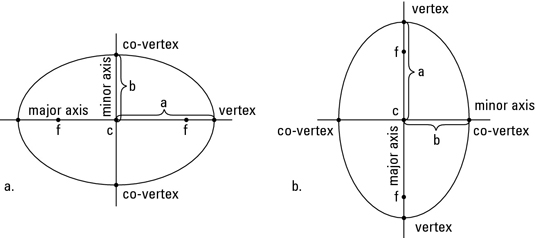This activity helps us to review the rules of the special right triangle and the unit circle. As well as how they both relate to each other. There are three types of special right triangle, which are 30°, 45°, and, 60°.
1.) The first type of right triangle is a 30°.
The shortest leg which is the opposite side of 30 and it is x.
The hypotenuse is the longest side of the triangle, which is 2x.
The side that is adjacent is y which y and has a radical of 3.

http://www.biology.arizona.edu/biomath/tutorials/trigonometric/specialangles.html
2.) The second type of right triangle is a 45°.
The two shortest leg are both x and equal to 1.
The hypotenuse has a radical of 2.
http://www.biology.arizona.edu/biomath/tutorials/trigonometric/specialangles.html
3.) The third type of right triangle is 60°.
The shortest length is x.
Whole the longest length has a radical of 3.
The hypotenuse, which is 2.
http://www.globalspec.com/reference/79218/203279/20-3-special-triangles-and-the-unit-circle
4.) This special right triangle activity helps us understand how the points make up the three types of special triangles in a unit circle.
5.) For just the information in the first quadrant we can figure out the rest.
http://www.education.com/study-help/article/unit-circle/
Based on the 30° triangle above it is positive because it is in the first quadrant. So everything will be positive and none will be negative. That is why the ordered pair, x and y will also be positive. The reference angle will be 30°. The coterminal angle will be 30°, 10°, 210°, and 330°.
http://www.montereyinstitute.org/courses/DevelopmentalMath/COURSE_TEXT2_RESOURCE/U19_L1_T3_text_container.html
For the 45° triangle above it is in the first quadrant so it will be positive. But if it is in the the 2nd quadrant then the x value will be negative, and the 3rd quadrant both the x and y quadrant will be negative, and the 4th quadrant only the y value will be negative. The coterminal will be 45°, 135°, 225°, and 315°.
http://www.education.com/study-help/article/unit-circle/
The 60° triangle above is in the second quadrant, so the x value will be negative. So the reference angle will be 60°. The coterminal angles are 60°, 120°, 240°, and 300°.
Inquiry Activity Reflection
1.) The coolest thing I learned from this activity was that the specials right triangles was part of the unit circle. The special right triangle will help us to find all the points on a unit circle.
2.) This activity will helps me in this unit because I don't have to memorize all the points on the graph for the unit circle. With the help of the special right triangle I can find all the points on the unit circle.
3.) Something I never realized before about special right triangle had a big impact on the unit circle is. That is because it helps us find the ordered pairs, angles.
Reference
http://www.biology.arizona.edu/biomath/tutorials/trigonometric/specialangles.html
http://www.globalspec.com/reference/79218/203279/20-3-special-triangles-and-the-unit-circle
http://www.education.com/study-help/article/unit-circle/
http://www.montereyinstitute.org/courses/DevelopmentalMath/COURSE_TEXT2_RESOURCE/U19_L1_T3_text_container.html





